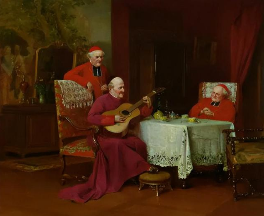When did the guitar appear? What fun does it give people? What has changed since it emerged?
9 min read
Guitar, as a kind of musical instrument, has been deeply loved by music lovers for its unique sound, beautiful melody and rich expression since its appearance. Guitar plays an important role in music. It is not only one of the indispensable Musical Instruments in concert, but also one of the leading roles in many musical works.01 The birth of the guitar.
The guitar also plays an irreplaceable role in People’s Daily life, becoming a very important cultural symbol. The guitar plays an important role in music. The guitar can be played not only as a string instrument but also as a solo instrument.
Guitar sound is clear, soft, has a very unique timbre, can present rich emotion and expression. Whether it is pop, rock, folk, jazz or classical music, the guitar is one of the indispensable instruments.
In many songs, the melody and chord formation of the guitar play a very important role in making the whole song more beautiful and moving, and the guitar has a very important place in the culture.
As a traditional western instrument, guitar has penetrated into the music culture all over the world. In many cultures, the guitar is not only a musical instrument, but also regarded as a symbol and cultural symbol. For example, in Latin American and Spanish cultures, the guitar is widely used and has become one of the representatives of these cultures.
In the United States, the guitar is also regarded as one of the representative instruments of country, rock and blues music. The position of guitar in culture is not only due to its importance in music, but also due to its unique cultural connotation and historical value.
Guitar also plays a very important role in one’s personal life. The guitar can become a person’s companion, accompany them through lonely times, or it can be a way to express emotions.
For those who learn the guitar, it is a way to exercise themselves and improve their skills. By learning guitar, people can improve their musical accomplishment and aesthetic ability, and cultivate their artistic temperament. Learning the guitar can also give people a sense of confidence and accomplishment, because through constant practice and effort, they can see their progress and growth.
In addition to personal growth, the guitar can be a social tool. Guitar music can bring people joy and empathy, and can also be a bond of communication between people. Playing the guitar has become a popular pastime at social occasions such as parties, camping trips, and travel. By sharing their music and experience, people can promote exchange and communication, and enhance their friendship and affection.
The guitar is very important in music, culture and personal life. As a musical instrument, the guitar not only has a unique sound and expression, but also can be a tool for people to learn and grow. In culture, guitar is an important cultural symbol and representative instrument, showing the connection and communication between different cultures.
In personal life, the guitar can be a companion and social tool, bringing joy and empathy to people and promoting the development of relationships. Therefore, guitar has an irreplaceable position and role in people’s life, for music lovers and learners, learning and mastering guitar skills is a very valuable thing.
02 The significance of guitar development.
Guitar is a kind of instrument with a long history, its development has experienced hundreds of years of evolution and change. The significance of the development of guitar is not only to promote the progress and innovation of music, but also to reflect the changes of human culture, technology and society.
The guitar can be traced back to the classical guitar of Spain and Italy, which existed in the form of stringed instruments and played an important role in classical music in Europe. In the late 18th century, the guitar began to spread to South America, blending with native musical cultures and developing distinct national styles such as Flamenco and Bossanova.
At the beginning of the 20th century, with the development of modern industrial technology, guitar began to appear the trend of electrification and amplification, electric guitar came into being. The appearance of the electric guitar greatly expanded the musical style and expression techniques of the guitar, making the guitar become an important instrument in rock, pop, jazz and blues and other genres, and also promoted the development and innovation of modern music.
In addition to its influence on music, the development of the guitar also reflects changes in human culture and society. In the 20th century, the guitar became one of the representative instruments of popular music in the United States, and became an important tool for social and cultural communication.
In the 1960s, guitarists became the voices of social and political movements in the United States, and their music and lyrics reflected the social realities and values of the time. The guitar played an important cultural and social role in this situation, becoming a symbol of resistance and change.
The significance of guitar development lies in its promotion and promotion of music, culture and society. Through evolution and transformation, the guitar has continuously expanded its musical style and expression techniques, and has become one of the indispensable instruments in modern music. At the same time, the guitar also reflects the changes of different cultures and societies, showing the diversity and richness of human culture and society. Thus, the development of the guitar is not only an important history of music, but also an important part of human cultural and social history.
03 The development of the guitar.
The guitar can be traced back to Europe hundreds of years ago, and its form and sound quality have gone through many periods of development and evolution, gradually becoming one of the indispensable instruments in modern music.
The earliest guitars date back to Spain in the 16th century, when they were plucked instruments made of wood and usually had four or five strings. In the 18th century, the guitar began to be widely used in European classical music, and gradually developed into the six-string guitar. At the same time, a variety of guitar playing techniques and repertoire emerged.
In the early 20th century, guitars began to be widely used in folk music. Guitars of this period were usually wooden flat tops with six strings and used finger picking and chord playing. Folk guitar music is characterized by lyrics that are as important as melody, and often with social and political significance.
In the early 20th century, jazz music began to appear, and the guitar gradually became one of the main instruments of this style of music. Jazz guitar playing is characterized by high speed, dense notes, and complex chords. There were many representative guitarists in this period, such as Charlie Christian, Dickinson, Bobby Griff, Wes Munger and so on.
In the mid-1950s, rock and roll became popular. Rock guitars are characterized by their loud volume and distinctive timbre, often using devices such as distortion effectors to create unique timbre. There were many great guitar players in this period, such as Jimi Hendrix, Eric Clapton, Jim Lowell, George Harrison, and so on.
As technology and musical styles continue to evolve, modern guitars have become increasingly diverse and sophisticated. Modern guitars usually have higher sound quality and more features such as digital signal processing, electronic tuning.
04 The meaning of the guitar.
The advent and development of the guitar had a profound impact on music and culture, changing things in many ways.
The advent of the guitar made music creation more flexible and diverse. Players can use the guitar to play chords and melodies, not just a single melody. The way the guitar is played also allows musicians to create more complex and expressive pieces of music.
Secondly, it also makes the form of music performance more diversified and vivid. Musicians can play solo guitars, play and sing together with other instruments, making musical performances more emotional and artistic.
And then promoted the development of many different styles of music. From traditional classical music to pop music, folk music, blues, jazz, rock music and so on, the guitar has played an important role.
Finally, it promotes the exchange and dissemination of music culture. Easy to carry and play, the guitar soon spread around the world and became one of the Bridges of communication and integration between different cultures.
The appearance of guitar changed the face of music industry, promoted the development and spread of music culture, and enriched people’s lives.
05 The development of the classical guitar.
The classical guitar is a stringed instrument, usually consisting of a wooden structure with six strings. It originated in Spain and first appeared in the 16th century. Over time, it gradually developed into the modern classical guitar. Classical guitar, with its unique timbre and playing skills, is widely used in various fields such as classical music, folk music and popular music.
The history of the classical guitar can be traced back to the Spanish Renaissance, the early 1500s. At that time, musicians in Spain began experimenting with finger-playing an instrument called the viola da mano, which later became the modern classical guitar. In the 17th century, guitars were widely used in Italy and France.
In the 18th century, it became one of the important Musical Instruments of the upper classes in Europe. In the early 19th century, the guitar was gradually replaced by piano and orchestral music, but it still held a high position in places like Spain and Latin America. In the early 20th century, classical guitar enjoyed a revival in Europe and the United States, becoming one of the most important musical genres.
The construction of the classical guitar is similar to other guitars, it has a wooden sound box and a string made of six strings. The strings of classical guitars are usually made of nylon wire, not metal. This gives it a relatively soft, warm tone, which is more suitable for playing styles such as classical music.
Classical guitar players use their fingers to strum the strings instead of using picks. Their right hands use their fingernails and fingertips to play the strings, which requires constant trimming and conditioning to get the best results.
Players usually place their fingers on the strings, not between them. They use the fingertips of their left hand to hold down the strings to produce different pitches and timbre. This requires very accurate finger placement and fingerboard control to ensure that the correct notes are played.
The instrument has a variety of playing techniques, including vibrato, glissando, bending, plucking and fingering. Players need to constantly practice and hone these techniques in order to produce precise, smooth music.
Classical guitar music is a genre based on classical music. It includes many famous composers and performers, such as Bach, Beethoven, Zamora, Taliga, Villa-Roca, and Talaga. The works of these composers and performers cover a variety of different styles, including Baroque, classicism, Romanticism and modernism.
At the same time, classical guitar music is usually played as a solo, but can also be played in collaboration with other instruments and vocals. Classical guitar as a solo instrument has a very wide range of applications, it can play beautiful melody and chord, can express a variety of emotions and artistic conception.
Classical guitars have evolved over time with many modern improvements. For example, modern classical guitars are often made of lighter wood in order to improve sound quality and volume. Some modern classical guitars are also equipped with electronic amplifiers to increase volume and change timbre during performances.
Modern classical guitarists continue to experiment with new techniques and styles. On the basis of traditional classical music, they incorporate a variety of different styles and elements such as pop, jazz and world music, making classical guitar music more diverse and rich.
Classical guitar, as a traditional instrument, has become an important music genre after hundreds of years of development. With its unique timbre and playing skills, it has been widely used in various fields such as classical music, folk music and popular music, and has become an indispensable part of music culture.






